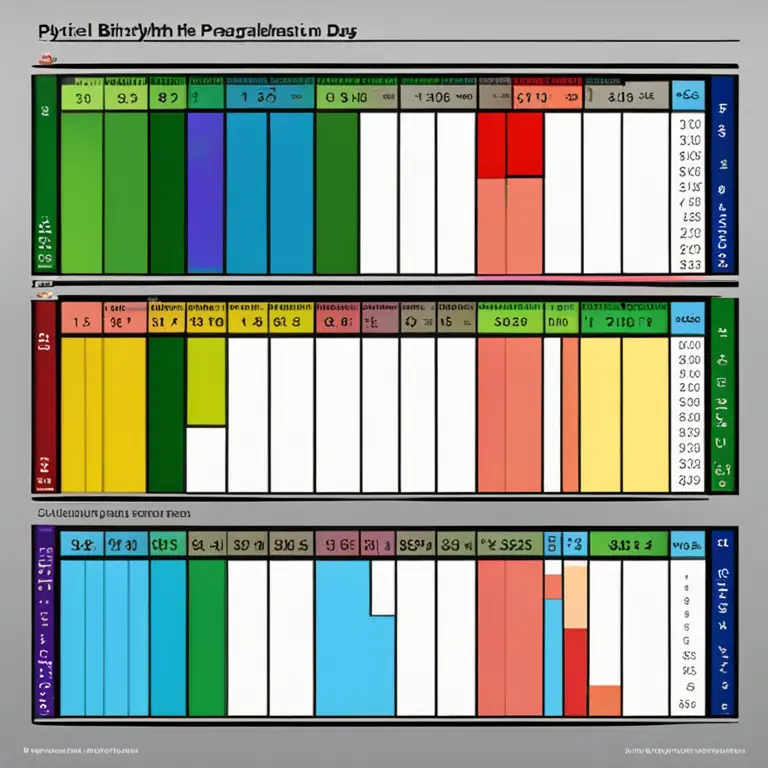
Calculating Biorhythms: A Guide
Discover the method to compute biorhythms and gain insights into your physical, emotional, and intellectual cycles.
article by Adrian Wallace
Introduction to Biorhythms
Biorhythms are a concept based on the idea that three fundamental biological cycles influence human behavior. These cycles start from birth and oscillate in a steady wave throughout life. The physical, emotional, and intellectual biorhythms are thought to govern our stamina, mood, and thought processes, respectively. The premise is that by tracking these cycles, one can anticipate times of strength or weakness. It's essential to note that the scientific community does not universally accept biorhythms as a predictive tool, but many individuals find value in this practice.

Understanding the Three Cycles
There are three primary biorhythms: the 23-day physical cycle, the 28-day emotional cycle, and the 33-day intellectual cycle. The physical cycle influences our strength and well-being, the emotional cycle affects our feelings and mood, and the intellectual cycle pertains to mental acuity and learning ability. Each cycle has a high phase (positive), a low phase (negative), and a transitional phase, where one moves from high to low or vice versa.

The Basis of Calculation
Calculating biorhythms involves determining where you are in each of the three cycles. The calculations are based on your birth date and the current date. Each cycle is represented by a sinusoidal wave, with the number of days from birth counting as the input to calculate the phase of the wave. Modern biorhythmic software or online calculators can simplify this process, but the mathematical principles remain grounded in sine wave functions.

Physical Biorhythm Calculation
For the physical cycle, divide the number of days you've lived by 23. The remainder of this division points to your day in the physical cycle. If you've lived 8,395 days, divide that by 23 to get 365 with a remainder of 10. This remainder places you on the 10th day of the physical cycle, potentially indicating a high level of physical energy.

Emotional Biorhythm Calculation
Similarly, the emotional biorhythm is computed by dividing the number of days lived by 28. Using the same example, dividing 8,395 by 28 results in 299 with a remainder of 27. Therefore, on the 27th day of your emotional cycle, you might experience heightened sensitivity or emotional intensity, as you're nearing the end of the cycle's peak.
Intellectual Biorhythm Calculation
The intellectual cycle is calculated by dividing the days lived by 33. Continuing with the previous number, 8,395 divided by 33 gives 254 with a remainder of 7. On the 7th day of your intellectual cycle, you might expect mental sharpness and clarity as you ascend towards the high phase of this cycle.
Interpreting Your Biorhythms
After calculating your position within each cycle, interpreting the results is the next step. When one cycle is in a positive phase while another is negative, the contrasting influences may result in mixed experiences throughout the day. Advocates of biorhythms suggest planning activities in harmony with these cycles for optimal performance and well-being.
Modern Tools and Biorhythm Tracking
In 2024 and beyond, the ease of calculating and tracking biorhythms has improved with digital advancements. There are now applications and platforms dedicated to monitoring these cycles, complete with personalized insights and statistical models that purportedly enhance accuracy. While biorhythms are still a subject of debate, the fascination with them endures, reflecting a continued human desire to find patterns and predictions in life's ebb and flow.
Published: 1/25/2024
Modified: 1/25/2024
More predictions
Come back here soon to learn more about yourself and your future


The Basis of Biorhythms: An Insight into Biological Cycles
Delve into the concept of biorhythms, the belief in rhythmic biological processes that purportedly influence human physiology and behavior.


The Basis of Biorhythms: Biological Cycles Explored
Delve into the foundations of biorhythms and discover how these natural cycles influence our daily lives and well-being.


The Principles of Biorhythm Cycles
Discover the fundamental principles of biorhythm cycles and how they influence daily life and personal well-being in this insightful article.